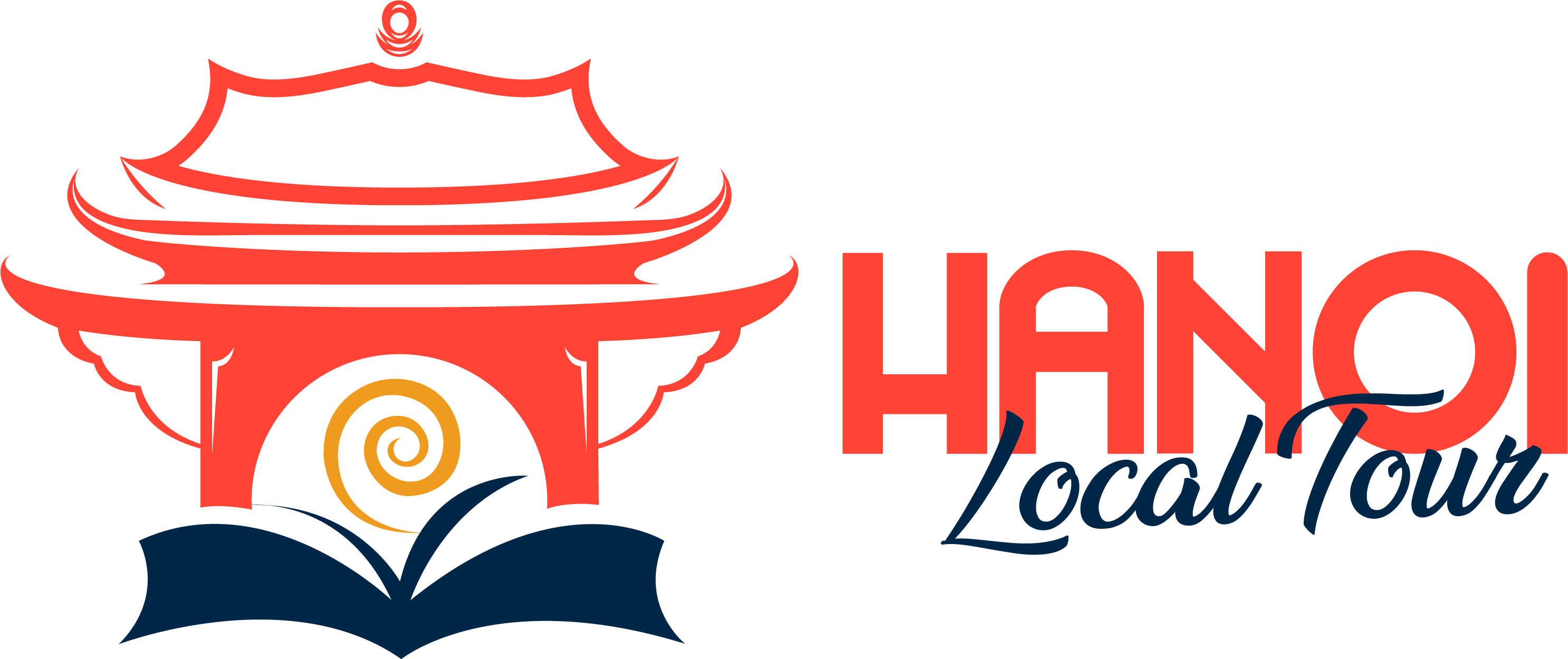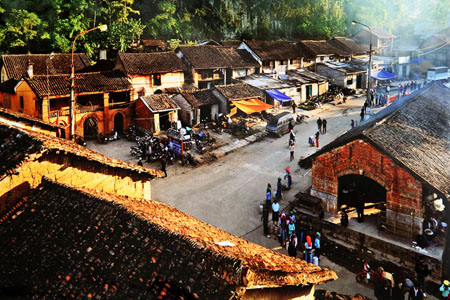Going to the highland or mountainous areas to enjoy and live in harmony with nature after a long tiring trips in the bustling air and hectic life of the big cities such as Hanoi would be a great experience for visitors. Ha Giang province is a destination not to be missed for those who love nature and want to discover the real life and authentic beauty of ethnic minorities.
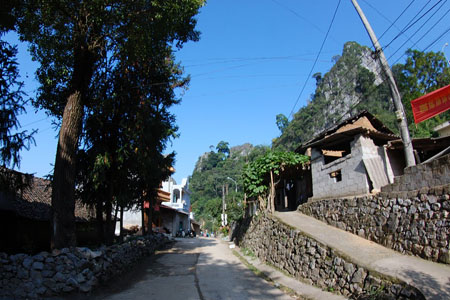
Ha Giang has many interesting tourist destinations and has renowned throughout the near and far regions with 11 magnificent wonders. And, the ancient town of Dong Van is one of them. Ha Giang not only has the bright Buckwheat flowers on a stone plateau in each autumn but also has it a tourist attraction similar to Hanoi, Hoi An. Referring to the old town, there has not just the ancient town of Hoi An or Hanoi 36 streets but also the ancient town of Dong Van.
Dong Van Town is located on the rocky plateau at an average altitude of 1000m - 1600m above sea level, about 160km from Ha Giang city. There are a town and an ancient market with architecture with hundreds of years old. Their ancient and quiet beauty make visitors empty their tiredness after going the long way to come to Dong Van. As one of the main attractions of Ha Giang, Dong Van Ancient Town is located in the town of Dong Van, Dong Van District, Ha Giang Province. The central area of the old town of Dong Van belongs Dong Quan, Nguyen Binh district, Tuyen Quang province and has had the historical development of architecture, culture for hundreds of years. In the 1880s, when occupying this area, the French had planned and left the important point about architectural planning, especially Dong Van Market built of stone in 1920 and kept almost there intact until this day.
Architecture
Dong Van town is situated in valleys covered by four sides of rocky mountains. The old quarter has only 40 houses put together and placed under the mountains. The old town was formed from the early 20th century and had only a few families of Hmong, Tay, and Chinese living, gradually more other local residents found this area and settled. Overall, the old town bears the characteristics of the Chinese architecture with the two-story house tiled yin-yang roof as well as red lanterns hanging highly.
The picture of the old town is expressed in various colors and varies by time of day. In the morning, this unique painting is skillfully blended by two shades of sunny yellow and gray of old houses. The quiet space in the morning dew is like being awakened by the light, bustling sounds and brilliant colors in ethnic costumes of Hmong, Chinese, Ray, Tay, Nung. When the sun sets, the inherent peace embraces the old town again in the heart of stone plateau. At night, the lights from every desk are just enough to illuminate dimly. In that space, there sometimes has the sounds of lip lutes of Hmong’s boys to call their mates. On weekend nights, the stores are bustling with the scenes of boys and girls from many villages invited by the store owner to sing folk songs, to dance as a way of communication.
Looking down from above, besides the three rows of the market arranged in U-shape tiled yin – yang roof is two blocks of the old town connecting to the base of the mountain. This is a residential area with mostly Tay people with dozens of old houses built by craftsmen from Tu Xuyen (China) and is considered an important part of the old town of Dong Van. According to documents from a conference about Dong Van town, this area remains approximately 40 old houses with over 100 years old, while some houses are almost 200 years built around 1860.
The common architecture here is a two-story house with tiled yin-yang roof. Particularly, Dong Van market area has many old houses to take advantage of the facade as Hanoi Old Quarter. Since 2006, each month, Dong Van district holds three old town nights on days 14th, 15th and 16th following the lunar calendar. Accordingly, households in the old town hang red lanterns and organize some activities such as exhibiting ethnic brocade, demonstration and sale of the traditional cuisine of the ethnic peoples with the hope to attract tourists like Hoi An ancient town.
Dong Van Market
Dong Van Market is not just a place to trade of ethnic minorities in the region but more than that, in the markets, festivals are organized. Hmong’s girls, people of Pu Peo, Lo Lo wear colorful traditional costumes go to the fair in order to play, to make friends, to buy and exchange products. Delicate and unique Interference of Vietnamese and Chinese architecture was built between the years 1925 - 1928, Dong Van market is like a beautiful and dramatic brushstrokes in the plateau.
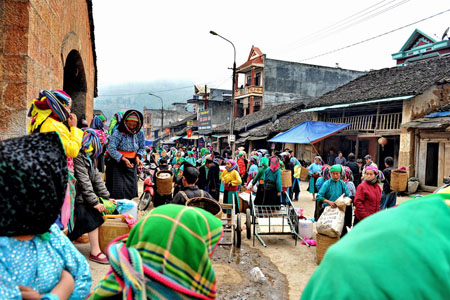
With its inherent characteristics, the beauty of the traditional culture, the architecture of the old town of Dong Van residents have made an impressive and unique feature of Dong Van Stone Plateau Geopark area.
Old Town cafeteria
Referring to the old town, the old town cafeteria, it is easy to think about Hanoi or Hoi An as a thought has become a habit, understandably, because the history of Dong Van old town in this border is younger than this of Hanoi Old Quarter or Hoi An Ancient Town; moreover, coffee seems to be the drink of the town in the plain, not in the high mountains. However, "Old Town Cafeteria" in the town of Dong Van has attracted all those who have entered here!
As one of the few old houses that still retains the ancient beauty in the old town of Dong Van being degraded and decayed, "Old Town Cafeteria" is a bright spot. Originally, this is the home of the landlord surnamed Luong of ethnic Tay, who was very powerful in the ancient Dong Van region. Nearly hundred years, this house has undergone many ups and downs along the old town, and fortunately, it is still almost intact. For scale, the house is quite large compared to other contemporary house in Dong Van with a wide façade. The architecture of this house has similarities to Vuong Palace of "Hmong King" Vuong Chinh Duc in Sa Phin valley influenced by the Qing dynasty architecture (China).
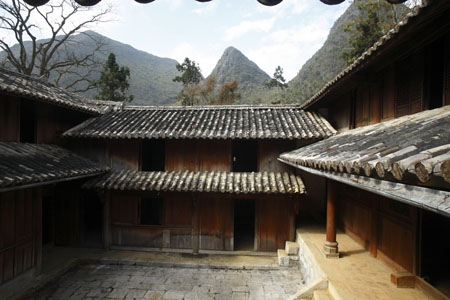
Dong Van old town is not too big but large enough to accommodate many people; and wider to cover all souls in the stone plateau, the people "live in stone, die buried in stone" or people from far away land coming and discovering this place. Explore the old town of Dong Van is sure to bring visitors an unforgettable experience that is inculcated in the minds of travelers.
